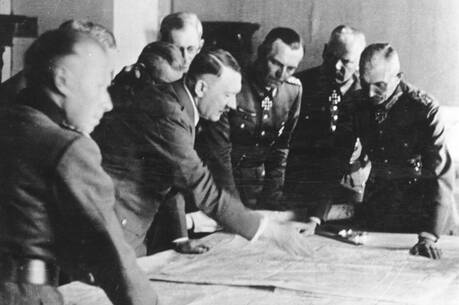Culture Clashes
If you like church history, and especially if you know and like Rome, you will like this book. Desmond O’Grady is an author and journalist who lives in Rome and is perhaps best known for his Rome Reshaped: Jubilees 1300-2000. He is not a professional historian, perhaps an advantage in this case, for the book moves along easily and swiftly from "the emergence of the church from the catacombs" to the coronation of Charlemagne in St. Peter’s on Christmas Day, 800. These are not the centuries most beloved of history buffs. They seem too confusing, too depressing, too distant from where we are now. O’Grady makes them come alive in 17 short chapters, with just enough detail to make you want to turn to the next page.
He makes the narrative vivid by focusing the chapters on personalities. My favorite is the chapter on St. Jerome. I’ve always known that Jerome, for all his brilliance and importance, was a curmudgeon of the first order. O’Grady lets him speak for himself. Jerome called the arguments of his opponents "drivel" and "vomit," and he "employed a bestiary of epithets for them: dogs, asses, pigs, tortoises, and serpents." He called critics of his translation of the Bible "two-legged asses." (Makes me think the starch has gone out of biblical scholars today in confronting their Roman critics.) Upon the death of his protector, Pope Damasus, he had to take almost as good as he gave when his enemies called him "an infamous rascal, a slippery turncoat, a liar who used Satanic arts to deceive."
Damasus himself did not come to the papal throne with hands entirely clean, it was thought. In the contested papal election, a gang of thugs slaughtered in the Julian basilica more than 100 of his rival’s supporters. That did not settle matters, which led to another gang of pro-Damasus thugs trapping the contender’s followers in St. Mary Major and killing another 100 or so. These were the good old days.
I also liked the chapter on Augustine, the longest in the book. O’Grady nicely summarizes Augustine’s life and achievement, puts him into context and provides sensitive summaries of Augustine’s theological positions. He is particularly good with Augustine’s campaign against "the Pelagians," which is of such tremendous import for the subsequent history of Western theology and spirituality. Augustine and Jerome were able to bury the hatchet as they took out after this common foe. "In a sense, Augustine and Jerome invented Pelagianism (Jerome was the first to use the term) by criticizing a renewal movement as if it were a doctrine." When Julian of Eclanum emerged as the Pelagian champion, the affair turned truly nasty, with Julian accusing Augustine of being a Manichee, a detestable African Aristotle, a quarrel seeker, babbler, slanderer and briber.
The book is not, however, just a series of vignettes or narrative without guiding theme. O’Grady is particularly interested in what happened to Roman culture as it interacted with Christianity in the centuries after Constantine and with what happened to Christianity as it interacted with Roman culture. Did the church conquer Rome, he asks, or did Rome conquer the church? Difficult to say, for after a certain point the same persons were both Roman and Christian. O’Grady is particularly successful in describing the refinement of the Romans who resisted the Christian movement and their reasons for doing so. But he is equally impressive in describing the other side, particularly the enthusiasm of the Christians of those first generations after Constantine for the material culture of Rome, their enthusiasm for putting up churches and other ecclesiastical buildings, in which Constantine had led the way. O’Grady’s love for Rome shines through especially in the care with which he locates these monuments within Rome today, whether they have survived pretty much in their pristine state or have undergone significant transmogrifications.
With the "barbarian" incursions the focus shifts, as these new peoples want to loot Rome for its riches and, often in the same breath, to transform themselves into both Romans and Christians. In this situation the bishop of the city, notably in the persons of Leo the Great and Gregory the Great, emerges with new leadership roles. Gregory comes through, inevitably, as attractive, flexible and wise. As O’Grady observes, Gregory by his tact and pastoral sensitivity speaks in a special way to our age. Toward the end of the book the Franks become the great protagonists, culminating in Charlemagne-that great Christian defender of the Apostolic See, with his five wives, four concubines and 19 children. This is a good read.
This article also appeared in print, under the headline “Culture Clashes,” in the February 11, 2002, issue.








